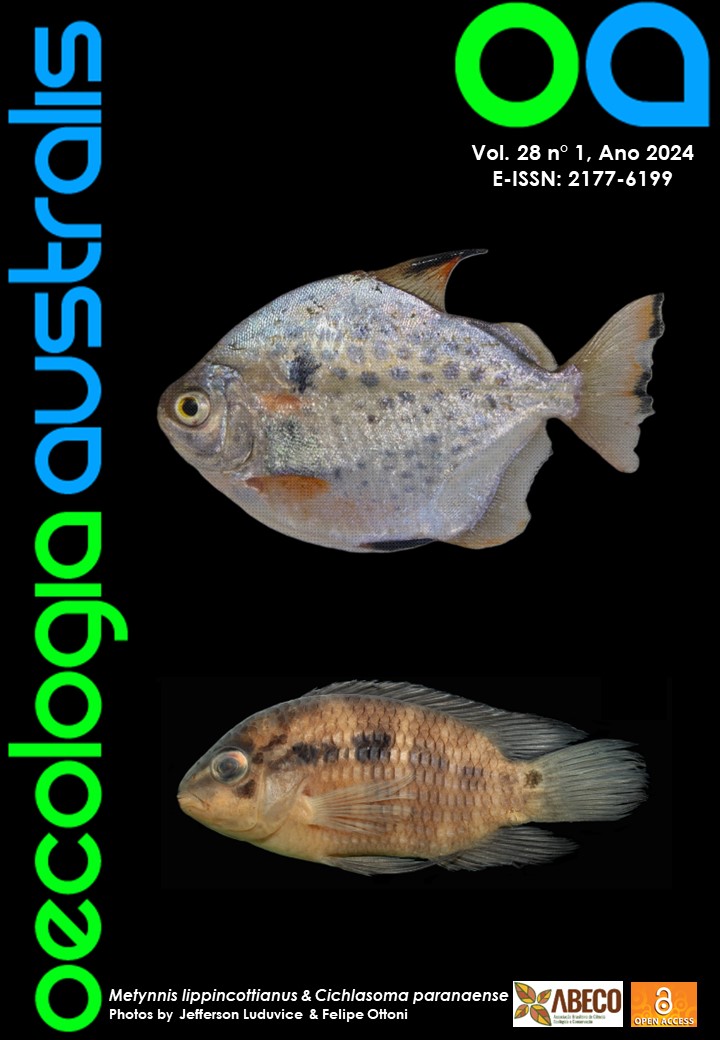ICHTHYOFAUNA OF STREAMS FROM THE PIRAJU AND TEJUPÁ MUNICIPALITIES, SÃO PAULO STATE, BRAZIL
Ichthyofauna of streams from the Piraju and Tejupá
Abstract
Fish surveys are important in the context of the freshwater biodiversity crisis. Ichthyological surveys provide information before the species become extinct; and, therefore, may propitiate policies for conservation measures. Studies in this scope area needed especially in municipalities such as Piraju and Tejupá, which are located in a populous and impacted region of the São Paulo State, southeastern Brazil. Both municipalities are in the Paranapanema River drainage, which is part of the upper Paraná River system. Here, we provide the results of an ichthyological survey carried out in watercourses of Piraju and Tejupá. We sampled 13 stream reaches using hand nets and cast nets. We captured 284 individuals belonging to 29 fish species belonging to 10 families and five orders. Almost all species are native to the region, with the exception of the poeciliid Poecilia reticulata. Our study revealed a high diversity of fish species in the Piraju and Tejupá regions. However, we emphasize the need for additional sampling in the streams of both municipalities, particularly through the use complementary methods (e.g. gillnets). If local governments implement initiatives to protect and restore just the streams sampled in this study, about 18 % of the fish species of Paranapanema River drainage will be benefited in some way


